Homeschool Middle School Biology Options
Can I just say that I love biology? From the interesting work with the microscope, to the amazing way the human body works, biology offers incredible insight into the world of living things.
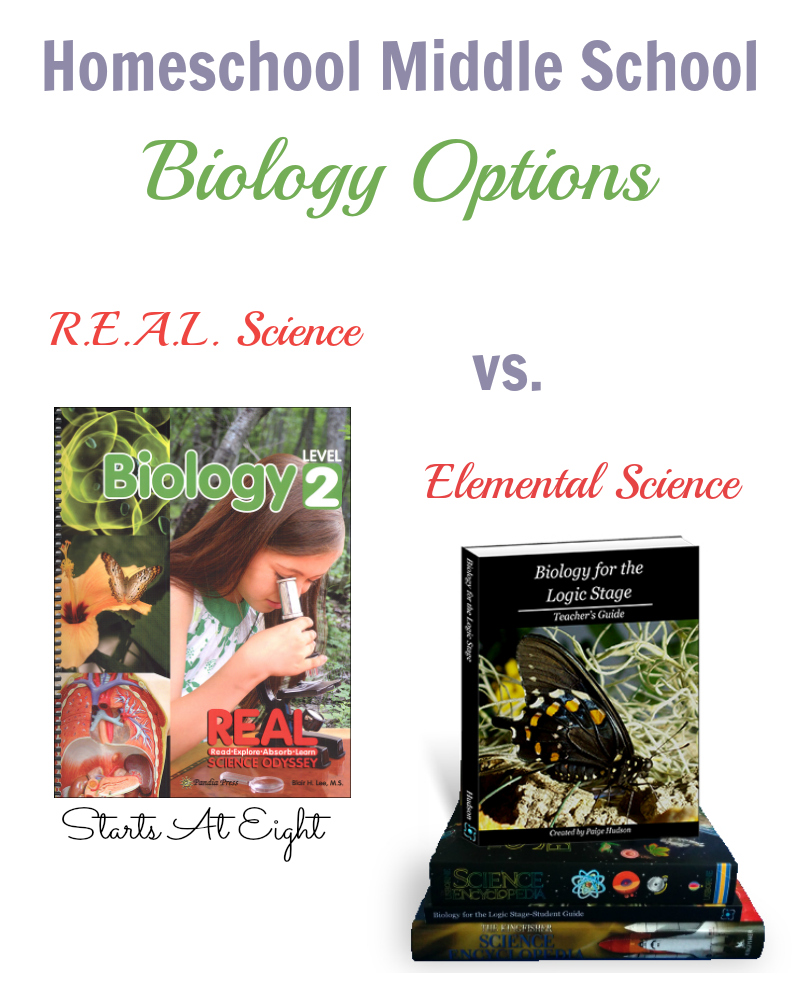
I have been on the hunt for a secular middle school biology program for my upcoming 8th grader. We are completing Earth Science this year and I would like to cover some basic biology before he hits high school biology in 10th grade.
Homeschool Middle School Biology Options
I have found two biology programs targeted at middle school that are solid, comprehensive options. While there are others (like Apologia) they are targeted at High School which is above where my middle school child is at.
Both of the following programs:
- are geared for students in grades 5 through 8
- contain a separate student text and parent/teacher guide
- offer both ebook and printed options
- cover 36 weeks of material
- include hands on lab work
- quizzes
1. R.E.A.L. Science – Biology (Level 2)
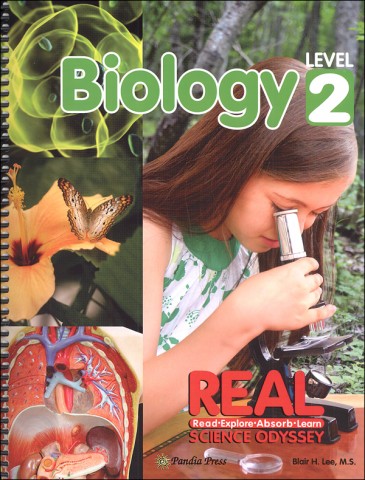
First up is…R.E.A.L. Science – Biology (Level 2).
“R.E.A.L. Science Biology (Level 2) is a comprehensive course for life science at the middle school level (grades 5 through 8). But unlike many science textbooks, RSO Biology 2 is not a dry collection of facts and worksheets but rather an in-depth course that engages young peopleʼs minds at the same time they are actively participating in the learning of biology.”
R.E.A.L. Science Scope and Sequence
Cells
- Cell theory
- Unicellular organisms
- Animal cell structure and function
- Plant cell structure and function
- Cell chemistry and nutrition
- Diffusion and cellular transport
- Photosynthesis and cellular respiration
- Virus life cycle
Genetics
- DNA, RNA
- Purpose of DNA, protein synthesis
- Life cycle of a cell and mitosis
- Meiosis
- Heredity
- Structure and function of chromosomes
- Punnett Squares
Organisms
- Multicellular organisms
- Dissection
- Plant organisms and systems
- Human organisms and organ systems
- Human anatomy and physiology
Evolution
- Theory of evolution
- History of evolution
- Evidence for evolution
- Natural selection
- Fossils and dating
Ecology and population dynamics
- Biomes
- Abiotic interactions
- Ecosystems
- Food web – producers, consumers, decomposers
- Biotic interactions- predator/prey relationship, camouflage, symbiotic relationships, mimicry, competition
- Biology cycles
- Greenhouse Effect
- Environment balance and threats
Classification
- History of classification
- Modern classification
- Dichotomous Key
- Binomial nomenclature
- Branching diagrams
- Phylogeny
- Cladistics
- Archaea and Bacteria
- Eukarya
- Protists and fungi
- Plantae
- Animal
This program is self-contained, meaning all the information and reading is contained within the student book.
Cost: The cost to purchase the spiral bound Student Book and the regular bound Teacher Guide is $174.00 ($132.00 SB+ $42.00 TG). You can also purchase the Lab Supplies kit which contains 29 of the harder-to-find items. Includes an advanced dissecting tools set, test tubes, safety goggles, slide set, and more. The cost for the lab supplies kit is $66.50.
2. Elemental Science – Biology for the Logic Stage
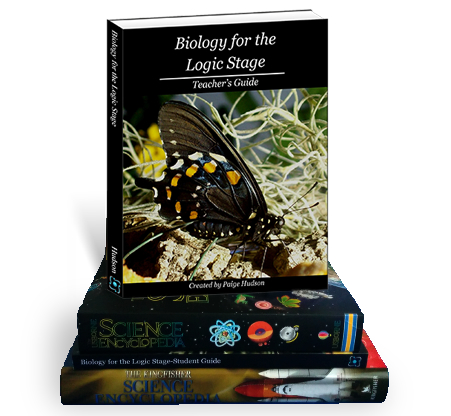
Elemental Science – Biology for the Logic State is the second option for homeschool middle school biology.
“Biology for the Logic Stage leads the middle school student through a study of plants, animal life, and the human body by digging deeper into what was studied during the elementary years.”
Elemental Science Sequence of Study
Introductory & Plant Units (11 weeks)
Unit 1: Biological Building Blocks (5 Weeks)
- Cells
- DNA and Genetics
- Classification
- Nutrient Cycles
- Ecology
Unit 2: Plants (6 Weeks)
- Fungi
- Simple Plants
- Flowerless Plants
- Flowering Plants
- Seeds and Fruit
- Trees
Animal Units (14 weeks)
Unit 3: Invertebrates (5 Weeks)
- Annelids/Platyhelminthes/Nematodes
- Cnidarians/Echinoderms
- Mollusks
- Arthropods
- Insects
Unit 4: Vertebrates (5 Weeks)
- Fish
- Amphibians
- Reptiles
- Birds
- Mammals
Unit 5: Animal Overview (4 weeks)
- Science Fair Project
- Migration
- Animal Behavior
- Animal Partnerships
- Adaptations and Defenses
Human Body Unit (10 weeks)
Unit 6: Human Body (10 Weeks)
- Integumentary System
- Skeletal System
- Muscular System
- Nervous System
- Endocrine System (optional Reproductive System)
- Circulatory System
- Respiratory System
- Digestive System
- Urinary System
- Immune System
This programs takes it reading and information from two major spines:
1. The Usborne Science Encyclopedia
2. The Kingfisher Science Encyclopedia
Cost: To purchase the printed Teacher Guide, printed Student Guide, and the two required spines list above, the cost is $84.99. You can also purchase the Lab Supplies kit which includes all the hard to find or difficult to get materials. The cost for the lab supplies kit is $66.99.
R.E.A.L. Science vs. Elemental Science
R.E.A.L. Science is more expensive but is self contained which means less books to use/lug. I also like the fact that their student book is spiral bound because it is easier to use that way. Although you could just order the ebook version of Elemental Science and have it spiral bound.
Elemental Science uses a more notebook style approach where R.E.A.L. Science has a more fill-in-the-blank, multiple choice type of feel.
Elemental Science is less expensive but has supplemental books. In some respects I like the fact that the reading is done from other books rather than from a text they created. It opens up the opportunity to explore various resources and helps to encourage kids to do their research, to look at multiple sources of information, and critically think about a topic.
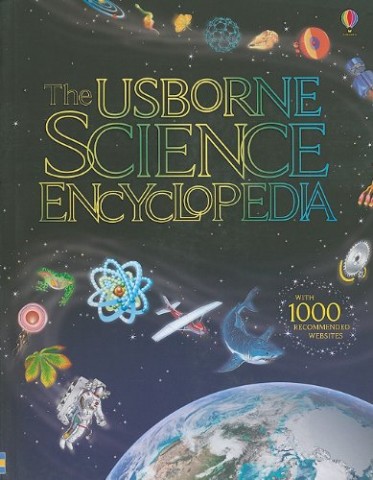
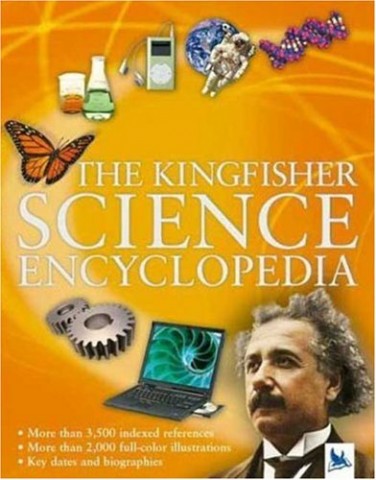



May 25, 2016 @ 10:09 am
Thank you for the in-depth review, Heidi! I have been looking for Middle School Science options as well. One question I have is whether or not the pacing is outlined in the REAL curriculum like it is int he Elemental book. You listed the actual weeks for completion in the review of the second book but not in the first. Is that because it is printed that way in the second book but not the first? Another question is whether or not Elemental has any mention of Evolution or is it just neutral? And my last question is would either of these programs be doable by the student themselves without parental supervision? Thanks!
May 26, 2016 @ 5:34 pm
Amy,
Yes the pacing is outlined in REAL Science, “I have provided you with suggestions for scheduling each chapter based on teaching science two days, three days, and five days.”
Yes, the weekly breakdown in the second was given by that publisher, thus I included it.
I am not sure of mention of Evolution in Elemental as I have never had either of these curricula in my hands. This is a compare/contrast based on my research of the two that I did to try and decide between them for my 8th grade son this coming year.
And I would say that yes, either of these should be doable by the student without supervision with maybe the exception of an occasional lab depending on their level of independence and your level of comfort with the lab materials they are using.
Hopefully that helps to answer your questions! 🙂
June 8, 2016 @ 7:10 pm
REAL Science Odyssey is secular science, while Elemental Science is neutral science. Neutral science avoids the subject of evolution by just leaving things out of their lessons.
June 8, 2016 @ 8:46 pm
Beckie, thank you for adding that information!